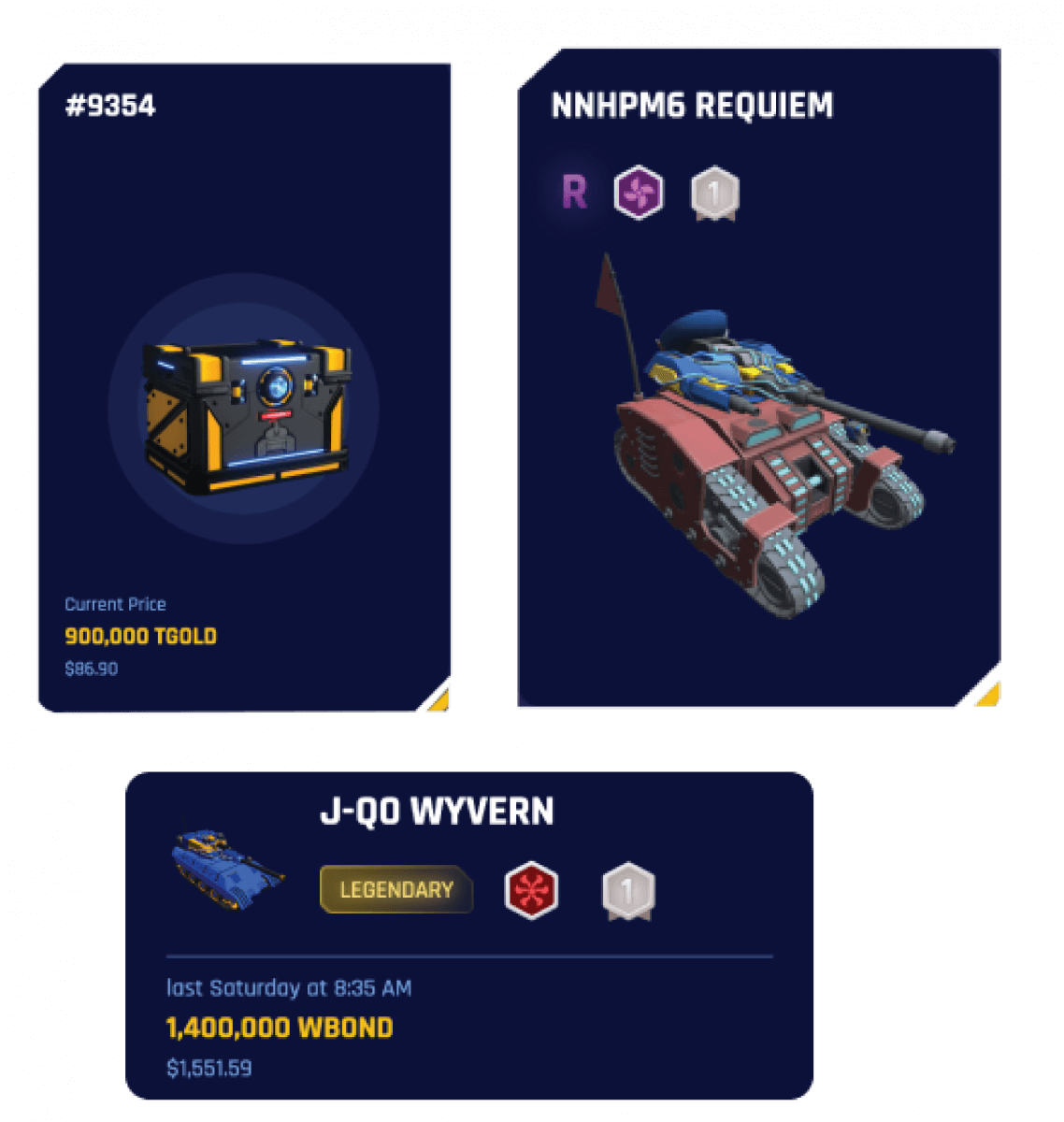Main features
(1) Gameplay
(2) PvE (Player versus environment or player versus enemy)
(3) PvP (Player versus player)
(4) Garage Features
(5) Lending Mechanics
(6) Tokenomics
We provided a fully decentralized play-to-earn (P2E) battle game, with a low-cost entry barrier, many players from developing countries will be able to join in. Our game aims at creating real-world blockchain gaming and universal basic income.
We provided a fully decentralized play-to-earn (P2E) battle game, with a low-cost entry barrier, many players from developing countries will be able to join in. Our game aims at creating real-world blockchain gaming and universal basic income.
1. Identify problems
The VNEXT Global team discusses with the client to draft a problem statement. The next step is to clarify potential solutions. What technologies are the most comprehensive ecosystem, both on-chain and off-chain? Then, we create a product roadmap that will help all delivery members to stay on track.
2. Choose a consensus-building mechanism
The next stage is to choose a consensus mechanism, which is a kind of approach used to foster confidence, security, and consensus inside a decentralized computer network. Here are several consensus methods we offer:
3. Select suitable blockchain platform
Our team discusses and gives the optimal options to clients to select the platform that most closely matches the requirements. It is because the platform can affect the consensus methods, the cost, the needs of developers, and the anticipated schedule while weighing your alternatives.
4. Create blockchain nodes
In this phase, we consult clients about some issues:
5. Create a configuration
VNEXT Global team prepare for a number of configuration components for the majority of blockchain systems, including:
6. Construct APIs
We create application programming interfaces (APIs) depending on client needs:
7. Create the user interface
Once the entire app is laid out, the user interface (UI) for each piece of product is created. Technical (backend) and visual designs are carried out parallely.
8. Upgrade hardware system
Blockchain applications that require a lot of computing power need a hardware accelerator to improve speed, give flexibility, and make optimal use of resources. Additionally, accelerators help to improve certain blockchain elements, including transaction validation, governance, and data storage.
(1) Gameplay
(2) PvE (Player versus environment or player versus enemy)
(3) PvP (Player versus player)
(4) Garage Features
(5) Lending Mechanics
(6) Tokenomics



Blockchain Development
We created the world’s first non-fungible tokens (NFTs) marketplace on Fuse Network. Our users are allowed to buy, sell, and discover exclusive digital items.
Blockchain Development
We take pride in creating one of the largest staking wallets in the SEA with more than 350 million of USD in staking by May 2022.
Blockchain Development
We are proud to create the first ever licensed crypto lottery in the world in Isle of Man (GB). The system is integrated to Nigeria Naija national lottery with more than 173 mil players.
Blockchain Development
We provided a fully decentralized play-to-earn (P2E) battle game, with a low-cost entry barrier, many players from developing countries will be able to join in. Our game aims at creating real-world blockchain gaming and universal basic income.
Blockchain Development
We provided a health - lifestyle platform with GameFi and SocialFi factors to encourage people to make movement. Users can work out on a daily basis either in single or world challenge mode. We also record training results of users and convert moving movement into valuable rewards.
Blockchain Development
The app for crypto exchange beginners, assisting to store, transfer, exchange and manage your crypto assets in the easiest one-step Wallet.
Blockchain Development
This is the official blockchain app that provides you with a safe and easy way to trade on-the-go.
Blockchain Development
An intense DEFI Game platform that elevates DEFI and blockchain gaming experience to the next level.
Blockchain Development
The app enables easy creation and transaction of Limited Digital Content Editions secured with blockchain to mass users.
Blockchain Development
One of the most notable blockchain projects in Japan was delivered by VNEXT Global.
Show VNEXT Global your ideas, and let us turn them into products.